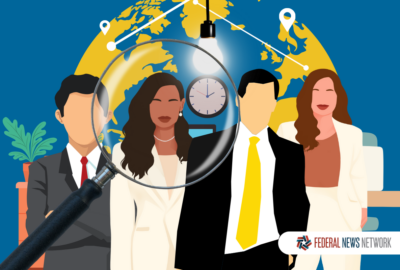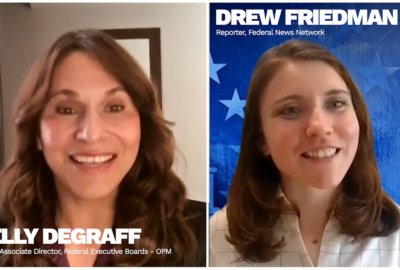For FEBs, getting some distance from DC is a good thing
Across the country, leaders of Federal Executive Boards (FEBs) say there are certain comforts of being a bit removed from the beltway.
One of the more memorable anecdotes from our special report last week on Federal Executive Boards (FEBs) came from just about as far west as you can get in the United States — Honolulu, Hawaii:
“I once joked with a supervisor that the time difference can be a real blessing. Sometimes a hair-on-fire issue which arises overnight or first thing in the morning in D.C. is often resolved before I open my email inbox in the morning.”
Raymond Tanabe, a now former chairman of the Honolulu-Pacific FEB, said that even a 7:00 a.m. start time in Hawaii means it’s already noon or 1:00 p.m. in Washington D.C. While he joked that the time difference can be a blessing in disguise, Tanabe also said it also often leads to cross-agency meetings that occur either at the crack of dawn or well after dinnertime.
So yes, there are both pros and cons to working for the federal government way out west. And even if feds aren’t that far out, it’s still fairly well known that 85% of the federal workforce does not live or work in the DMV. The percentage is an easy way to sum up how vast the more than 2.2 million feds really spread, but to some, it might be hard to grasp what that really looks like.
That’s what Federal News Network’s series tried to accomplish — pointing to the geographical vastness of the federal workforce, while also highlighting that FEBs underpin the important connections among government employees.
In South Florida, federal employees are tracking hurricanes and responding to natural disasters. In Cleveland, Ohio, NASA employees are conducting space simulation tests at the Glenn Research Center. And in Seattle — the other Washington — feds are studying earthquakes and the forests of the Pacific Northwest.
Like Tanabe in Hawaii, plenty of FEBs leaders nationwide recognize and appreciate their distance from D.C., in part because of the separation they have from what many view as a political bubble.
There are certain comforts of being a bit removed from the beltway, said Larry Hisle, the FEB executive director in Kansas City, Missouri. There’s less pressure, less drama — the atmosphere feels more relaxed.
“We are less engaged in politics and those that are trying to make a big name for themselves,” added Christal Murray, former executive director of the Los Angeles FEB. “I believe we have more time to provide effective support when not having the distractions that might come with working in D.C.”
“Being outside of the D.C. bubble also affords us the opportunity to be creative in our approach to interacting with external stakeholders without the ‘optics’ of such collaboration being on the front page of various publications for varying reasons,” said Darrell Graham, chairman of the Atlanta FEB.
Even so, many senior executives during Federal News Network’s special report also expressed a desire to overcome the “us versus them” mentality — or in this case, “headquarters versus field offices.” And it’s the right time for that change. Many of the federal leaders called 2024 a “year of transition” for federal employees in their area, as the FEB program sets out to expand its reach and deepen the already-existing connections.
“FEBs can really help unite the federal workforce by bringing the information, opportunities and activities to their own local regions,” said Agnes Winokur, the FEB vice chairwoman in South Florida.
In just the last couple of years, the federal workforce has shifted to a more hybrid, flexible model of work. And that means there may be even more connectivity among FEBs and federal employees operating nationwide.
“This new virtual world that the COVID-19 pandemic required us to embrace has opened up opportunities for us to be more dynamic, flexible and creative in helping federal agencies with their needs this year,” said Stephen Millen, program director for the FEB Eastern Region.
At the same time, Anita Leach, the FEB executive director in St. Louis, Missouri, mentioned that when working for the government outside the DMV, it can sometimes feel like there’s less support or focus on regional issues.
But federal employees working across the country do deserve more attention, and more time in the spotlight. They’re closer to the issues in the field. They know best what’s going on right in their own backyard.
So while “the 85 percent” as a number on its own may not pack a whole lot of punch anymore, considering the diverse areas, and hearing what’s going on in all these different regions, you get the sense that the government really does have a place everywhere — not just in the DMV.
More than anything, what the distance from D.C. brings is better perspective.
Nearly Useless Factoid
Right outside of Washington, DC, Virginia’s federal workers make up 3.7% of the state’s total workforce, while in Maryland, federal workers make up 4.7% of the state’s total workforce.
Source: USA Facts
Copyright © 2024 Federal News Network. All rights reserved. This website is not intended for users located within the European Economic Area.
Drew Friedman is a workforce, pay and benefits reporter for Federal News Network.
Follow @dfriedmanWFED






